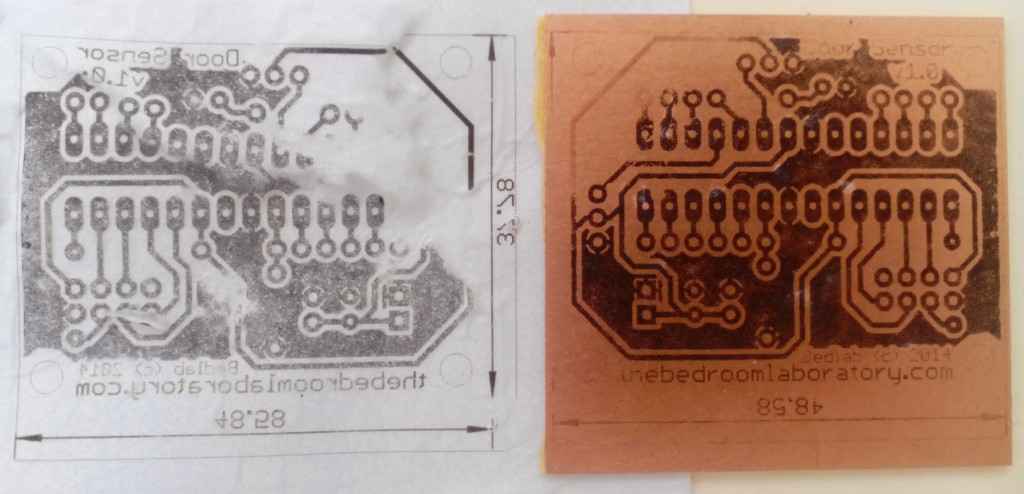Work in progress…
The Dublin Maker event is now just around the corner, so we’ve reached fever pitch at The Bedroom Laboratory. We’ve embarked on Hack Weekend 2, to try cobble all of our separate pieces of the project together. One major issue that we have to tackle this week is making up the PCBs for all of our circuits.
We wanted to be a bit more professional this year and have some PCBs made up for our project. Due to other ongoing work, we didn’t manage to make the deadlines for getting the boards made professionally by iTead/OSHPark. Rather than break out the perfboard immediately, we decided to give home etching a shot. I got a beginner’s etching kit in Maplin a while ago so this seemed to be the perfect opportunity to break it out.
I have been periodically researching the best practices for home etching. For instance, I spec’d and bought parts for making my own UV light-box for exposing photo-sensitive boards last year. I still haven’t had time to construct it yet, but fret not, that shall be a post in the future. As a result, this post will deal with the toner transfer method. There is a fair supply of tips and tricks online elsewhere for home PCB etching (this is one of my favourites: http://www.bot-thoughts.com/2009/08/simple-diy-pcb-etching.html). Rather than rehashing them here, I’d like to share my own personal perspective on the whole process. For instance, the first thing that has become apparent is that getting the PCB design printed in Reads, on their “glossiest” paper, will not do for toner transfer. Despite some very careful cleaning, ironing, soaking and peeling, you can see that the transfer is quite dappled. I reckon the paper just wasn’t glossy enough for transfer to be honest.  Tomorrow we’re going to take a trip to get as many different types of glossy and magazine-page types of paper that we can and try again.I’ll keep you posted on how the rest of the process goes over the next week. I have a feeling it could take a while to figure out all the issues related to making a functional PCB but it really is quite a fun challenge!
Tomorrow we’re going to take a trip to get as many different types of glossy and magazine-page types of paper that we can and try again.I’ll keep you posted on how the rest of the process goes over the next week. I have a feeling it could take a while to figure out all the issues related to making a functional PCB but it really is quite a fun challenge!